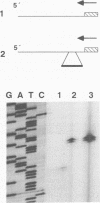Abstract
A cDNA clone of tomato mosaic virus (ToMV) genomic RNA was fused to the cauliflower mosaic virus 35S RNA promoter and the nopaline synthase gene polyadenylation signal. The transcriptional initiation site of the 35S RNA promoter was altered by in vitro mutagenesis so that the resulting transcripts start at the first nucleotide of the ToMV sequence. In addition, 12 nucleotides were inserted in the 5' untranslated region of the ToMV genome. This plasmid, pSLN, was used to inoculate several host plants of ToMV. Among five plant species tested, only Chenopodium quinoa accumulated large amounts of viral particles. The infectivities and systemic movements of the resulting viruses were the same as those of virus preparations obtained from a ToMV infection of C. quinoa. Primer extension analyses revealed that the 5' end of the viral genomic RNA was identical to those of RNAs isolated from virus progeny of an infection with T7 transcripts analogous to pSLN. Moreover, the insertion in the 5' untranslated region of the viral genome was stably maintained through several systemic passages of the virus. Thus, inoculation of plants with a plasmid containing a cDNA clone of an RNA virus under the control of a eukaryotic promoter seems to be a convenient alternative to the generation of in vitro transcripts and should facilitate the analysis of viral mutants generated at the DNA level.
Full text
PDF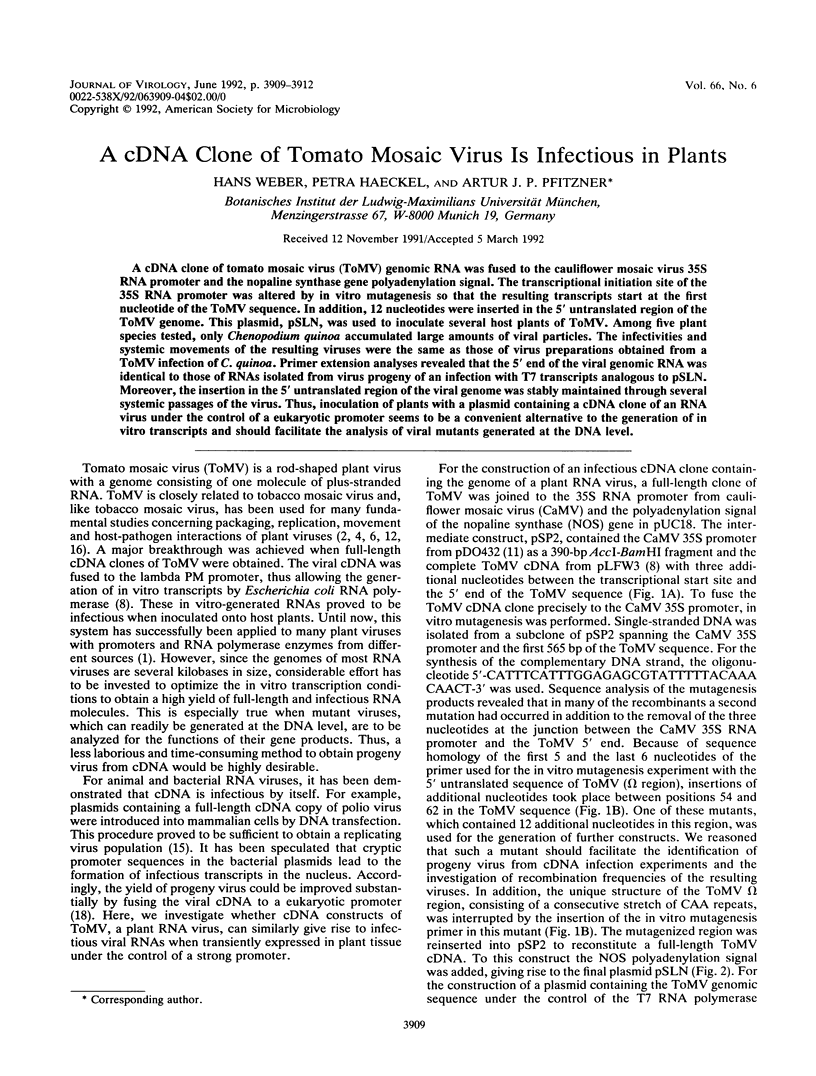
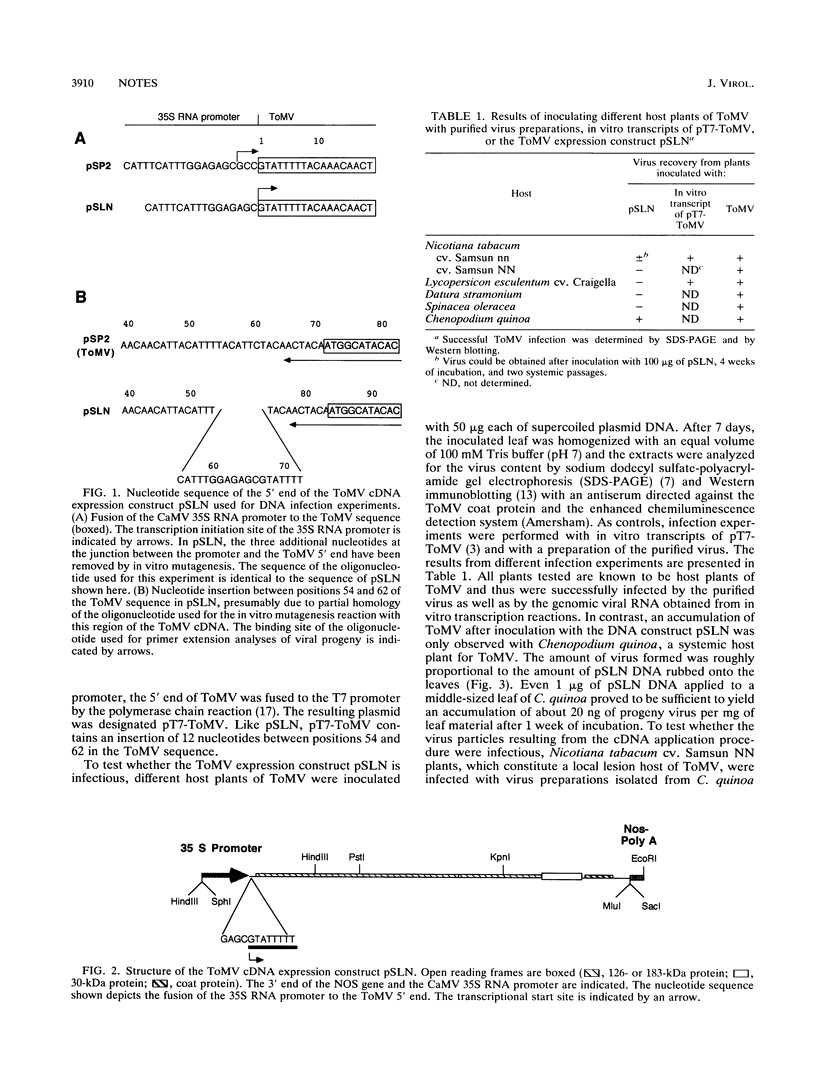
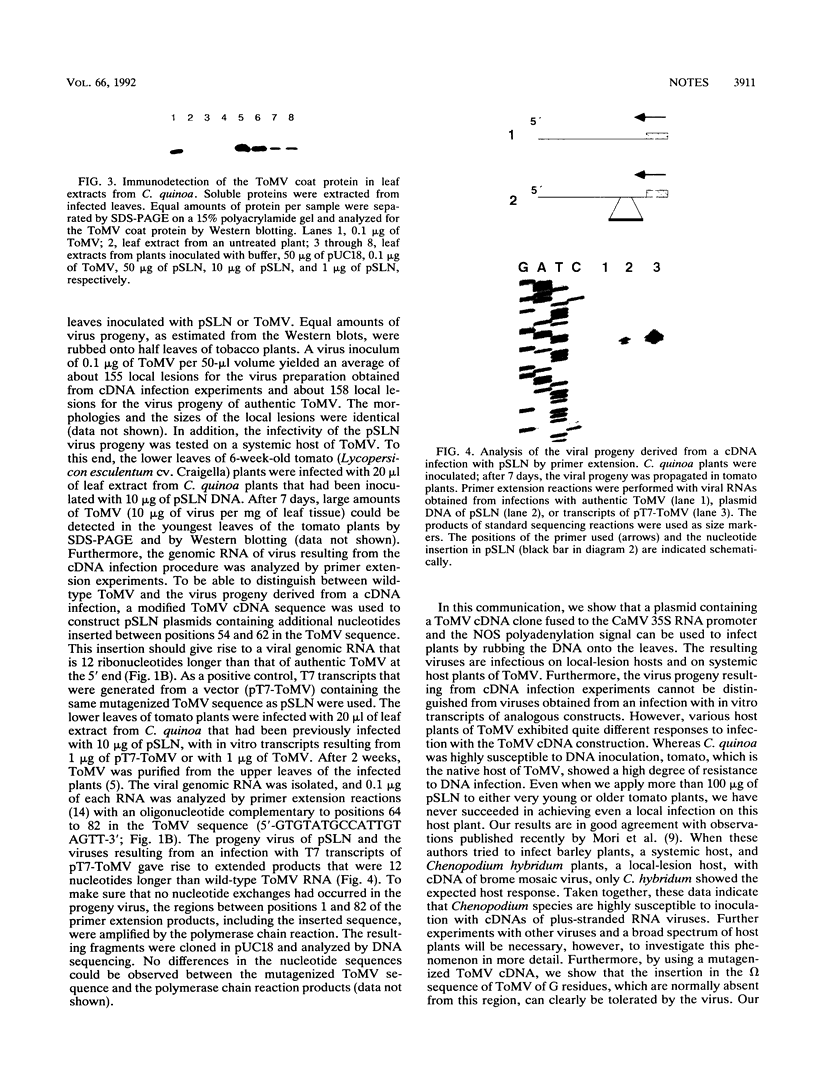
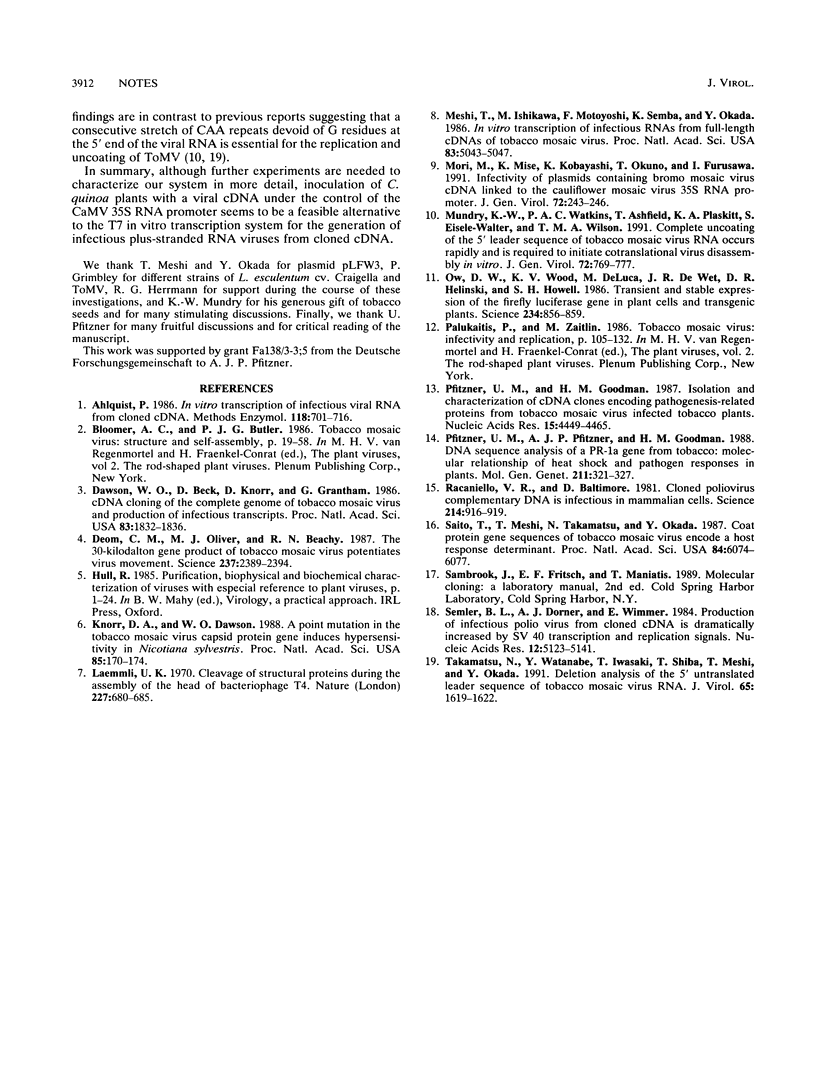
Images in this article
Selected References
These references are in PubMed. This may not be the complete list of references from this article.
- Dawson W. O., Beck D. L., Knorr D. A., Grantham G. L. cDNA cloning of the complete genome of tobacco mosaic virus and production of infectious transcripts. Proc Natl Acad Sci U S A. 1986 Mar;83(6):1832–1836. doi: 10.1073/pnas.83.6.1832. [DOI] [PMC free article] [PubMed] [Google Scholar]
- Knorr D. A., Dawson W. O. A point mutation in the tobacco mosaic virus capsid protein gene induces hypersensitivity in Nicotiana sylvestris. Proc Natl Acad Sci U S A. 1988 Jan;85(1):170–174. doi: 10.1073/pnas.85.1.170. [DOI] [PMC free article] [PubMed] [Google Scholar]
- Laemmli U. K. Cleavage of structural proteins during the assembly of the head of bacteriophage T4. Nature. 1970 Aug 15;227(5259):680–685. doi: 10.1038/227680a0. [DOI] [PubMed] [Google Scholar]
- Meshi T., Ishikawa M., Motoyoshi F., Semba K., Okada Y. In vitro transcription of infectious RNAs from full-length cDNAs of tobacco mosaic virus. Proc Natl Acad Sci U S A. 1986 Jul;83(14):5043–5047. doi: 10.1073/pnas.83.14.5043. [DOI] [PMC free article] [PubMed] [Google Scholar]
- Mori M., Mise K., Kobayashi K., Okuno T., Furusawa I. Infectivity of plasmids containing brome mosaic virus cDNA linked to the cauliflower mosaic virus 35S RNA promoter. J Gen Virol. 1991 Feb;72(Pt 2):243–246. doi: 10.1099/0022-1317-72-2-243. [DOI] [PubMed] [Google Scholar]
- Mundry K. W., Watkins P. A., Ashfield T., Plaskitt K. A., Eisele-Walter S., Wilson T. M. Complete uncoating of the 5' leader sequence of tobacco mosaic virus RNA occurs rapidly and is required to initiate cotranslational virus disassembly in vitro. J Gen Virol. 1991 Apr;72(Pt 4):769–777. doi: 10.1099/0022-1317-72-4-769. [DOI] [PubMed] [Google Scholar]
- Ow D. W., DE Wet J. R., Helinski D. R., Howell S. H., Wood K. V., Deluca M. Transient and stable expression of the firefly luciferase gene in plant cells and transgenic plants. Science. 1986 Nov 14;234(4778):856–859. doi: 10.1126/science.234.4778.856. [DOI] [PubMed] [Google Scholar]
- Pfitzner U. M., Goodman H. M. Isolation and characterization of cDNA clones encoding pathogenesis-related proteins from tobacco mosaic virus infected tobacco plants. Nucleic Acids Res. 1987 Jun 11;15(11):4449–4465. doi: 10.1093/nar/15.11.4449. [DOI] [PMC free article] [PubMed] [Google Scholar]
- Racaniello V. R., Baltimore D. Cloned poliovirus complementary DNA is infectious in mammalian cells. Science. 1981 Nov 20;214(4523):916–919. doi: 10.1126/science.6272391. [DOI] [PubMed] [Google Scholar]
- Saito T., Meshi T., Takamatsu N., Okada Y. Coat protein gene sequence of tobacco mosaic virus encodes a host response determinant. Proc Natl Acad Sci U S A. 1987 Sep;84(17):6074–6077. doi: 10.1073/pnas.84.17.6074. [DOI] [PMC free article] [PubMed] [Google Scholar]
- Semler B. L., Dorner A. J., Wimmer E. Production of infectious poliovirus from cloned cDNA is dramatically increased by SV40 transcription and replication signals. Nucleic Acids Res. 1984 Jun 25;12(12):5123–5141. doi: 10.1093/nar/12.12.5123. [DOI] [PMC free article] [PubMed] [Google Scholar]
- Takamatsu N., Watanabe Y., Iwasaki T., Shiba T., Meshi T., Okada Y. Deletion analysis of the 5' untranslated leader sequence of tobacco mosaic virus RNA. J Virol. 1991 Mar;65(3):1619–1622. doi: 10.1128/jvi.65.3.1619-1622.1991. [DOI] [PMC free article] [PubMed] [Google Scholar]



